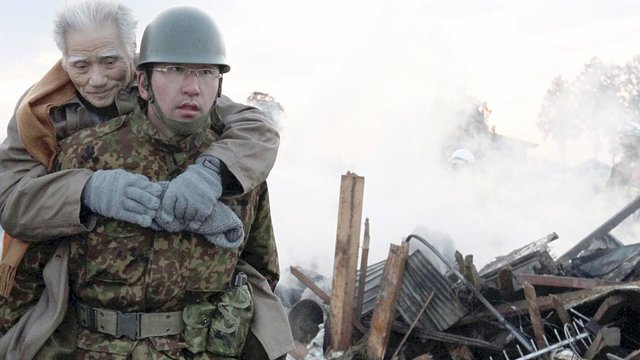Today, 13th October 2014, is the International Day for Disaster Reduction. The theme this year focuses on older people. This afternoon I attended an event hosted by the Overseas Development Institute with the theme: Resilience is for Life: Disaster risk reduction in an ageing world. The three speakers were Chris Roles (Director of Age International), Silvia Stefanoni (Director of Policy and Strategy and Deputy CEO of HelpAge International), and Tom Mitchell (Head of Climate and Environment Programme at the Overseas Development Institute).
2 billion older people globally by 2050, the majority in developing countries
Chris Roles led the seminar highlighting the needs and contribution of all ages is needed to build resilience to natural hazards. We need to recognise that our world is ageing, both in developed and developing countries. These demographic changes will have implications on how we should prepare for and respond to disasters; an ageing population will require different help and priorities in the face of disasters.
Silvia Stefanoni from HelpAge International spoke on the vulnerability of the elderly in relation to disasters. For example, the provision of food in the aftermath of a disaster should be nutritionally suitable for an elderly person. Health care priorities will be different. The elderly will have mobility issues, and are often isolated, without a means of evacuating, or support networks. Displacement patterns responding to disasters are different for the elderly population. HelpAge International found the elderly are often the last to leave a disaster zone, and the last to leave the refugee camps. Poverty as a result of no, or minimal, pension schemes increase their vulnerability. Another issue for older people is whether the state able to keep paying out pensions in the immediate aftermath of a disaster. Older people are more likely to suffer from psychological distress from their experiences in a disaster.
75% of deaths during by Hurricane Katrina were comprised of >60 year olds
56 % of those who died and 89% of post-disaster deaths from the great East Japan earthquake were 65 years old and over
But Stefanoni also highlighted it’s not all doom and gloom. We can use this time to focus on the opportunities the elderly provide us with before, during, and after a crisis. The elderly are, by nature, survivors with a high level of knowledge gained throughout the years. They can provide information on local weaknesses, and tensions within the community. They are often respected leaders able to mobilise local communities. They have a knowledge of the hazards that have affected the area within their lifespan. This is particularly useful for regions where historical records of hazards are sparse or nonexistent. HelpAge International have led successful schemes to empower and educate the elderly, utilising them as a resource in response and preparation for disasters.
Disaster Risk Reduction preparedness training in the Philippines. Photo: UNISDR
Tom Mitchell from the ODI then offered his congratulations to HelpAid International on their coverage of the issues for older people in their report: Disaster resilience in an ageing world: How to make policies and programmes inclusive of older people. He talked about the three revolutions that are occurring in the disaster field: (1) disaster data, (2) creation of risk, (3) disasters occurring in conflict and fragile affected states. He highlighted the data availability opportunity as the one with most promise for success and growth, particularly in relation to the age issue. We must first understand the problem before we tackle it. Disaggregated data is needed before a disaster occurs, and as part of the information gathering in the immediate aftermath of a disaster, to know where the vulnerable communities are and what their needs are. Essentially, disasters are anomalous occurrences, and therefore analysing loss data can be misleading. Running disaster scenarios to identify the vulnerable areas to disasters and the potential impact could be more useful for preparation rather than waiting for disasters to occur.
History has shown disasters result in a disproportionate loss of older people. Their needs are often overlooked in disaster preparedness and humanitarian response. By 2050, the proportion of older people will have doubled to 22%. While the ageing population represents improvements in healthcare and development progress, an ageing population means an increase in vulnerability to risks and disasters. In combination with the projected increase in frequency and severity of natural disasters, this overlooked and vulnerable population’s needs must be addressed looking forward.


